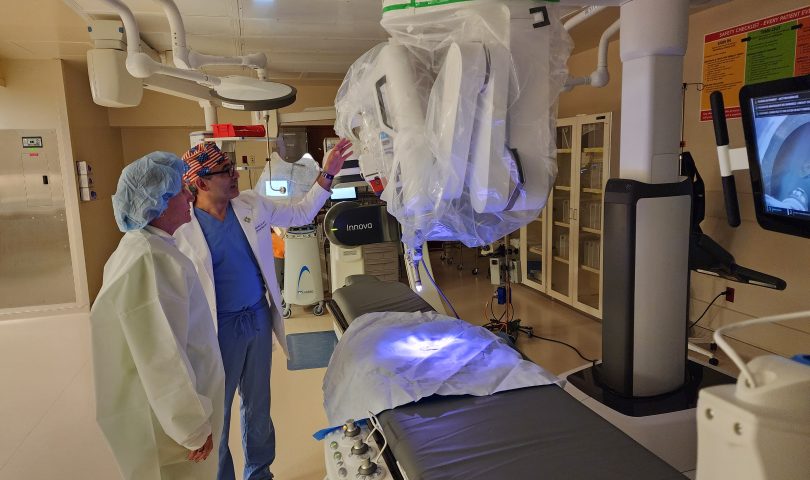MORGANTOWN — Dr. Jaschar Shakuri-Rad came to Mon Health Medical Center’s urology department five years ago to develop a robotic surgery program.
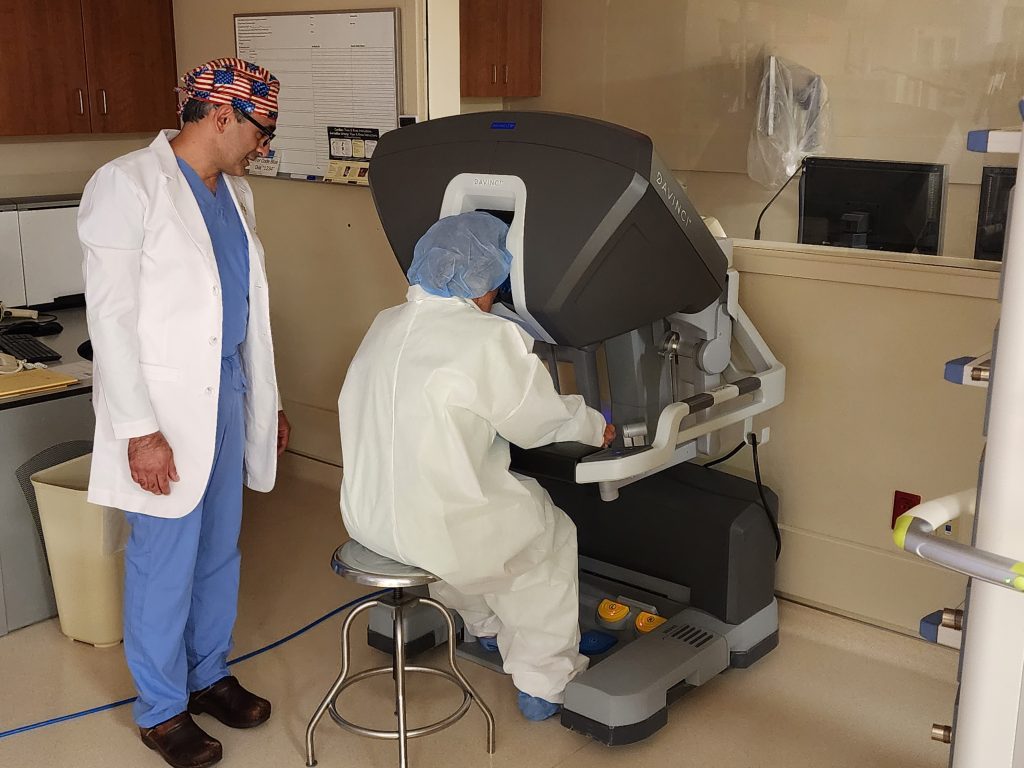
And in May, he advanced the program a step farther, performing the hospital’s first single-port surgery to remove a patient’s cancerous prostate.
The advance was made possible, he said, through a robotic surgery system new to the hospital: the da Vinci SP.
Dr. Rad, as he’s called, performed previous surgeries on Intuitive Surgical’s sister system, the da Vinci Xi, which has four robotic arms and requires four-to-five separate, small incisions for the procedure.
If they’re trying to get to the prostate, he said, “We’ve got to go through these other places and there’s always risk of damage or injury to these other organs.”
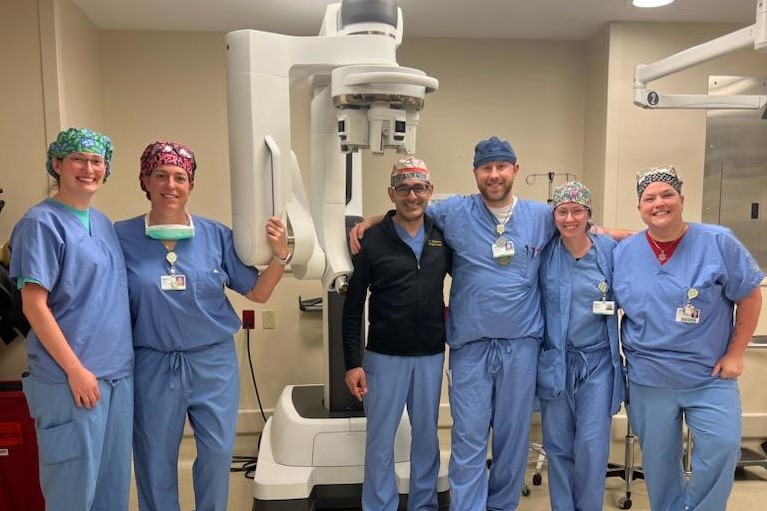
The opportunity to further minimize minimally invasive surgery came when his Mon Health colleague, Dr. John Battin, diagnosed patient Roy Barnhart with prostate cancer and referred Barnhart to Rad.
Barnhart had already undergone several surgeries in the past — open surgery and laparoscopic — which means there’s always a high risk of scar tissue in the belly, Rad said.
He thought about using the da Vinci Xi but then turned his thinking to the single port. “He’s a perfect candidate. I can stay outside of the true abdominal space and go inside his bladder through a 3- to 4-centimeter incision.”
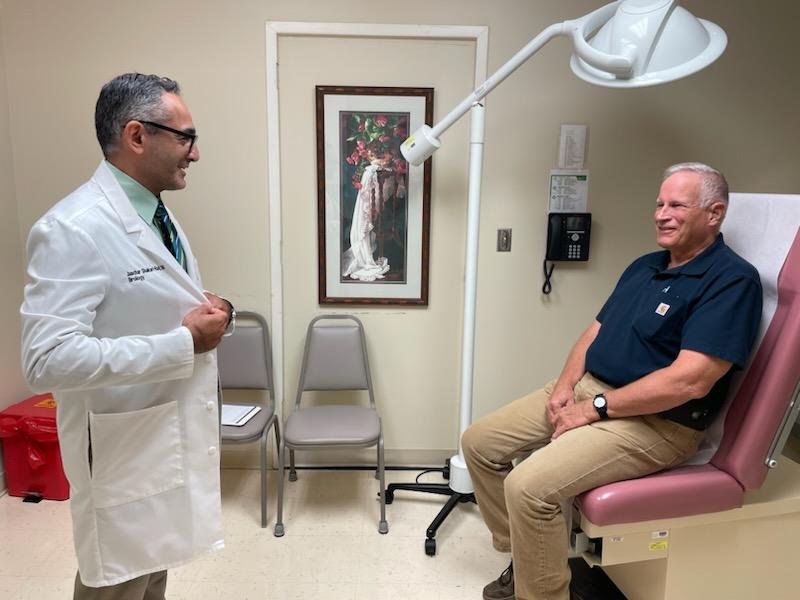
That’s a single incision, just 1.2 to 1.6 inches.
And the doctor doesn’t stand over the patient. The port is inserted at bedside, the robot is connected, and the doctor then steps over to the nearby console to perform the procedure.
Intutive Surgical describes it this way: “With the da Vinci SP, a single arm delivers three multi-jointed instruments and a fully wristed 3DHD camera for visibility and control in narrow surgical spaces. This versatile and high-performance single-port system can help empower you to perform procedures with a range of complexity.” The doctor controls three instruments and an endoscope through a single incision.
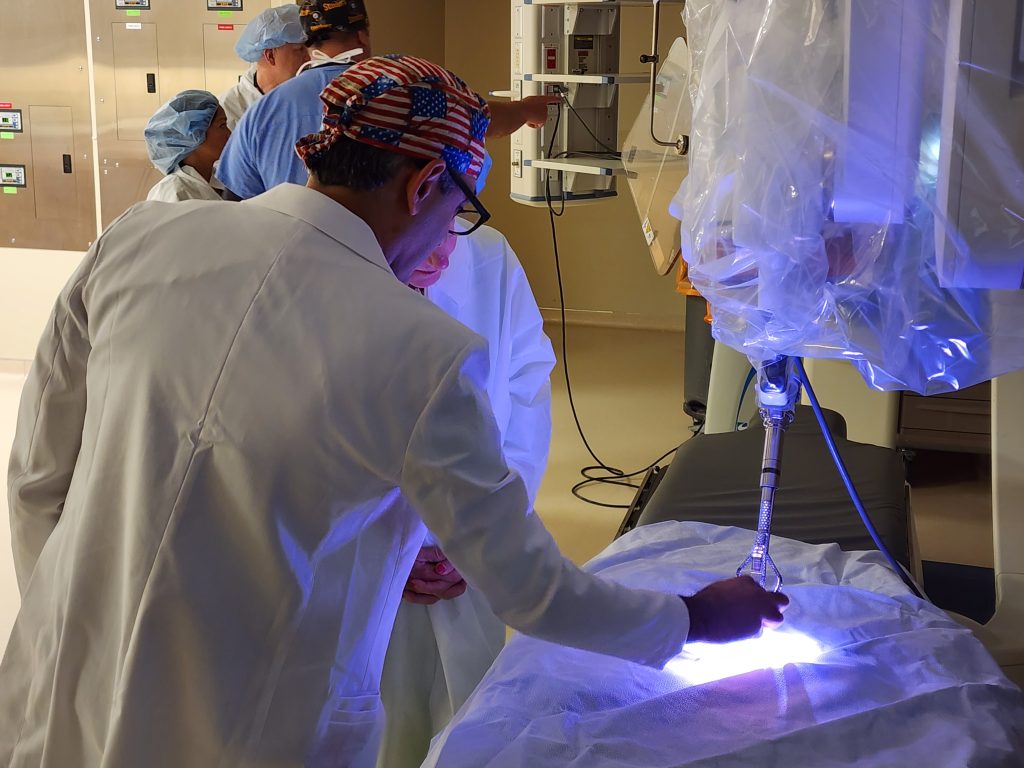
So he shut down his clinic for a week, he said, and traveled to Atlanta, Detroit and other places to train and work with other surgeons using the SP, then scheduled Barnhart upon his return.
Barnhart said his previous surgeries included a three-day hospital stay for one, with a return a week later with a post-op infection; four days for a gall bladder removal with complications; and a kidney removal that required three and half days in the hospital.
For this prostatectomy, he said, the wall clock read 11:25 a.m. when he was wheeled into the operating room. “I was home in my chair about 7:45 that night. It was an amazing contrast.”
And the post-op pain was minimal — two mornings with some abdominal pain. Not the weeks of recovery from the prior surgeries. “It was nothing like that this time. For this I one could go about daily activities, following weight restrictions and other routine cautions. I was very impressed.”
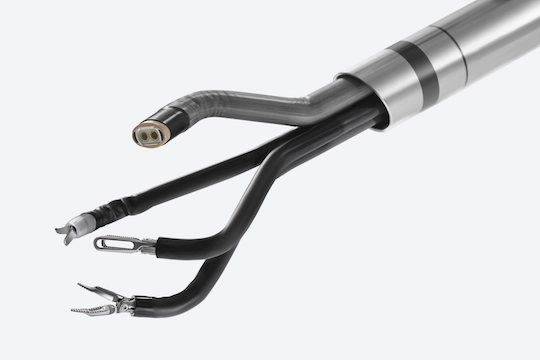
And, Rad said, blood work six weeks’ post-op showed no signs of cancer.
And that quick return home is an improvement over the multi-port surgeries, he said. Pre-COVID, da Vinci Xi surgeries called for a one-day hospital stay. During COVID, he developed some techniques to allow for going home the same day, but with five-to-eight hours post-op observation to make sure the patient was ready.
“With the single-port surgery, that’s no longer the case. The patients just really wake up, they feel fantastic, pain is minimal and they’re able to just get in the car and go home.”
From the time Barnhart left the OR until the time he was rolled out to his car was 128 minutes, Rad said. “That’s the first time I’ve ever seen that.”
He’s done four single-port surgeries altogether, and the turnaround has been consistent, he said. And after Barnhart’s surgery, he took a month off to further research and improve the techniques, and has trimmed the on-table time from five hours to three.
The single-port surgery is more difficult for the physician because of the small incision, like operating through a keyhole, Rad said, but for the patient it’s worth it: There’s less pain, discomfort and time in hospital.
“I think any surgeon should be willing to learn whatever technique it is, even if it’s painful for them, if it benefits the patient in the end. … The goal is always to do the least amount of damage to the patient’s body while maximizing the outcome.”
And Barnhart is pleased he was able to aid in this advance. “To find a new way here at Mon General here in Morgantown, just 20 miles from my house, was just amazing to me. I was very grateful for that. It did me a lot of good.”
EMAIL: dbeard@dominionpost.com
TWEET @DominionPostWV

